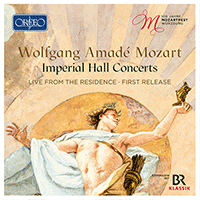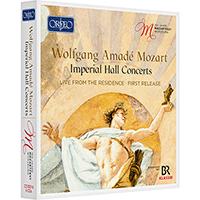Reinhard Goebel
Known as both violinist and conductor specialising in period-instrument performance of early music, Reinhard Goebel began learning the violin at the relatively late age of twelve. His teachers included Saschko Gawriloff (a mainly modern player) and Baroque violinists Marie Leonhardt (in The Hague) and Eduard Melkus (Vienna). Goebel’s most notable activities in early music performance include the rediscovery of music by Johann David Heinichen and Jan Dismas Zelenka—both Dresden court composers—and the founding of Musica Antiqua Köln, which involved fellow students from the Cologne Conservatory where Goebel studied musicology. After a spontaneous paralysis affected his left hand, Goebel learnt to play the violin ‘left-handed’. His recordings have won numerous awards, including the Deutscher Schallplattenpreis, Gramophone Award and Grand Prix du Disque.
Reinhard Goebel’s playing evidences many of the expected characteristics of period-instrument Baroque performance, augmented by a liveliness of articulation (heard to good effect in the vivid Biber ‘Rosary’ Sonata No. 4 which is declaimed with admirable clarity) and a warmth of tone that does not exclude some use of vibrato. This is evident in the ‘Brandenburg’ Concerto No. 1, which Goebel recorded in 1986 on a violino piccolo (a violin approximately quarter-sized, tuned a minor third higher). Arguably, there is a rhythmic strictness here that would probably not have been common in Baroque performance. Given the impossibility of knowing with absolute certainty how players of this time would have behaved, it is indeed notable how conventional Goebel is within the remit of late-twentieth-century Baroque practices, but this is not to say that his recordings are anything other than a very compelling experience. Whilst there is relatively little separating Goebel’s playing style in the earliest performance selected here (the Marais, recorded in 1978) and the most recent, he is quite clearly sensitive to the idiomatic differences of various works, suggesting that he does not subscribe to the ‘one size fits all’ Baroque performance practice that limited the historical credentials of some earlier pioneers. There is an elevated seriousness to the Bach sonata (1983), for example, whilst the repetitive harmonic underpinnings of the Marais give way to a quasi-improvised freedom, and the Biber (1990) is full of declamation and musical rhetoric.
It is clear from these recordings that Goebel is an intelligent and technically immaculate player; variety and communicative intensity further define his playing in this genre as noteworthy.
© Naxos Rights International Ltd. — David Milsom (A–Z of String Players, Naxos 8.558081-84)


















